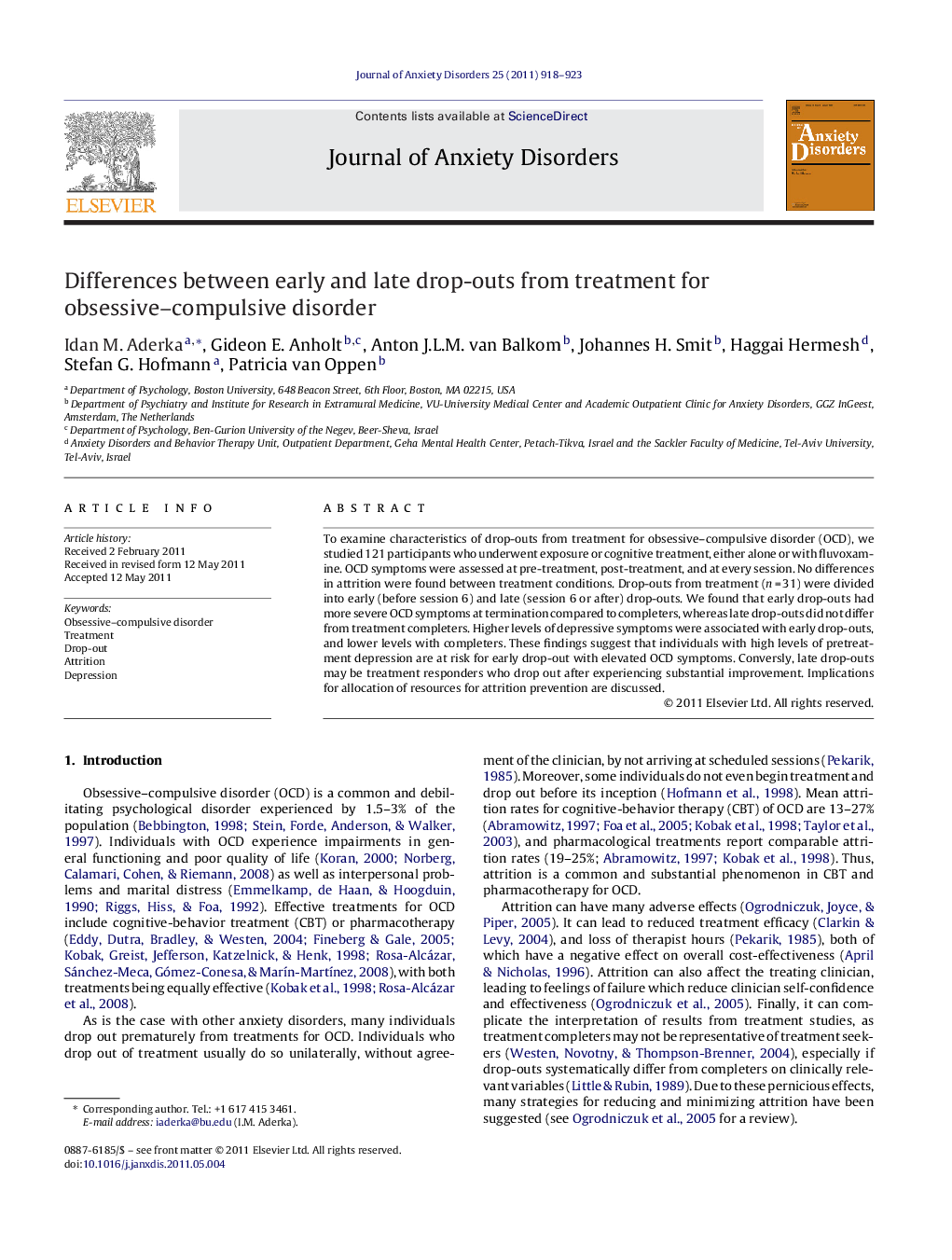| Article ID | Journal | Published Year | Pages | File Type |
|---|---|---|---|---|
| 909610 | Journal of Anxiety Disorders | 2011 | 6 Pages |
To examine characteristics of drop-outs from treatment for obsessive–compulsive disorder (OCD), we studied 121 participants who underwent exposure or cognitive treatment, either alone or with fluvoxamine. OCD symptoms were assessed at pre-treatment, post-treatment, and at every session. No differences in attrition were found between treatment conditions. Drop-outs from treatment (n = 31) were divided into early (before session 6) and late (session 6 or after) drop-outs. We found that early drop-outs had more severe OCD symptoms at termination compared to completers, whereas late drop-outs did not differ from treatment completers. Higher levels of depressive symptoms were associated with early drop-outs, and lower levels with completers. These findings suggest that individuals with high levels of pretreatment depression are at risk for early drop-out with elevated OCD symptoms. Conversly, late drop-outs may be treatment responders who drop out after experiencing substantial improvement. Implications for allocation of resources for attrition prevention are discussed.
► Attrition in psychological and pharmacological treatment for OCD was examined. ► Early (before session 6) drop-outs had elevated OCD symptoms at termination compared to completers. ► Late (session 6 or after) drop-outs did not differ from completers on OCD symptroms at termination. ► Pre-treatment depression significantly discriminated between early drop-outs and completers. ► Time of treatment attrition is associated with clinically relevant patient characteristics.
